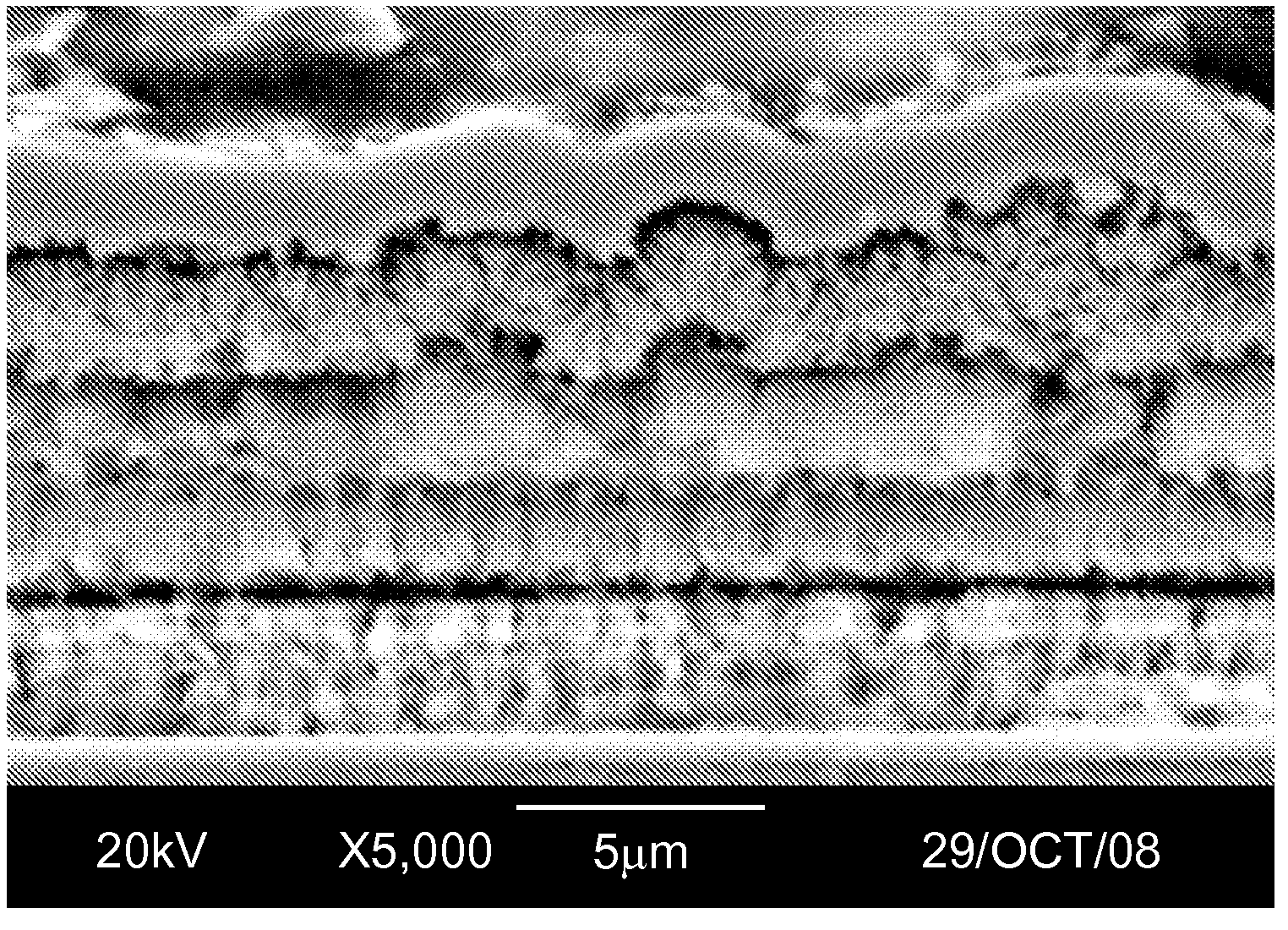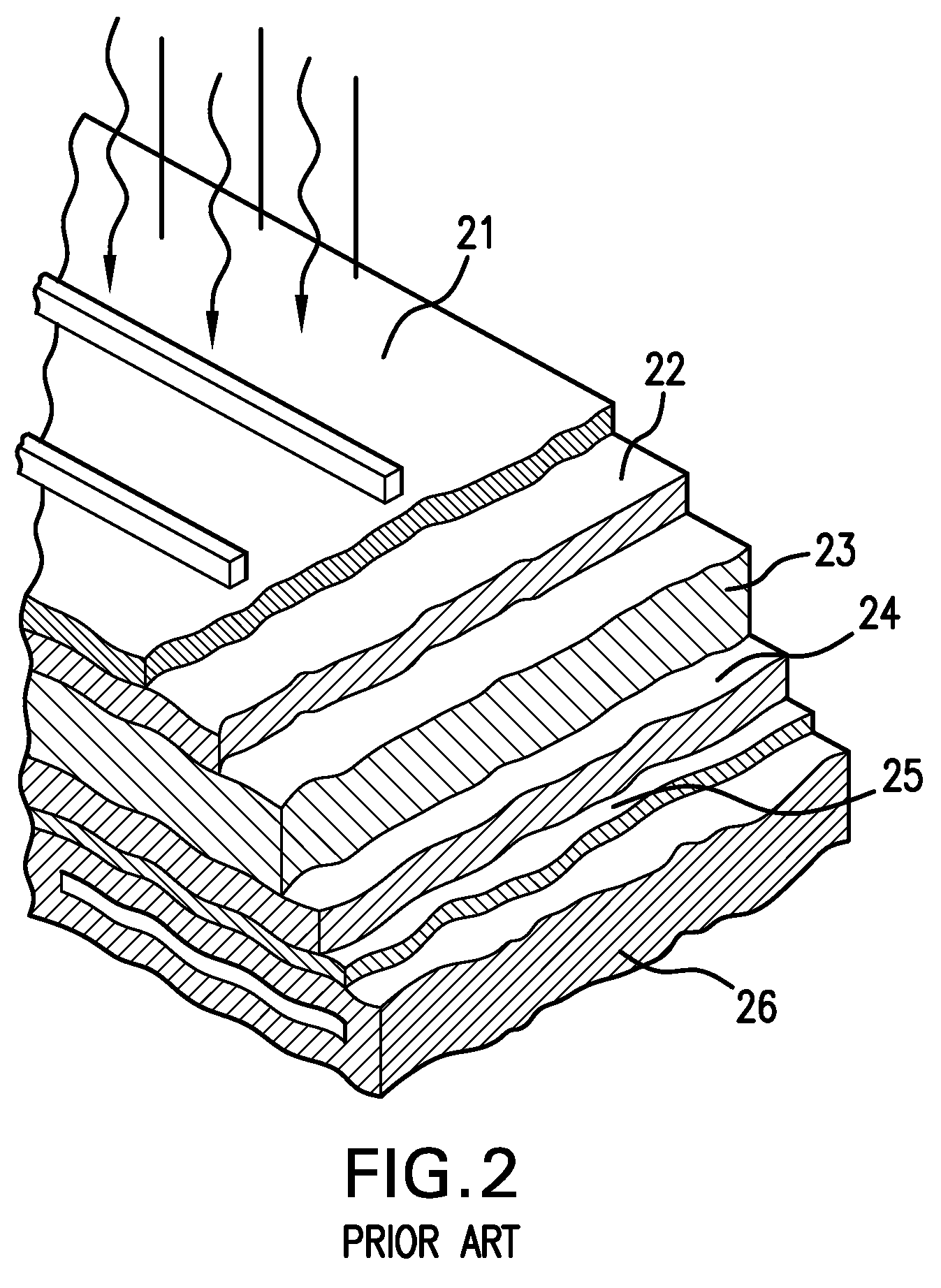Method of metallizing solar cell conductors by electroplating with minimal attack on underlying materials of construction
a solar cell and conductor technology, applied in the direction of optics, coatings, optical elements, etc., can solve the problems of materials easily being chemically attacked by immersion in conventional electroplating solutions, the cost of commercial implementation of dry deposition methods is high, and the effect of improving the conductivity and efficiency of solar cells
- Summary
- Abstract
- Description
- Claims
- Application Information
AI Technical Summary
Benefits of technology
Problems solved by technology
Method used
Image
Examples
example 2
[0041]Silver was electroplated from a commercial silver non-cyanide electrolyte which is also free of organic sulfonic acids (Technisol AG from Technic Inc.) onto a silicon solar cell substrate which had been previously metallized and fired with silver conductive paste. Silver was plated at 1 A / dm2 for a period of time sufficient to obtain an average of 5 μm silver deposit thickness. The residual stress value of this deposit was approximately 4000 psi. The metallized solar cell was then subjected to heat and humidity aging at 85° C. / 85% RH for 1000 hrs, after which a simple tape test for adhesion was performed. This sample passed the tape test as none of the silver deposit or conductive paste was removed during the tape removal.
example 3
[0042]Silver was electroplated from a commercial silver non-cyanide electrolyte which is also free of organic sulfonic acids (Technisol AG from Technic Inc.) onto a silicon solar cell substrate which had been previously metallized and fired with silver conductive paste. Silver was plated at 1 A / dm2 for a period of time sufficient to obtain an average of 5 μm silver deposit thickness. The residual stress value of this deposit was approximately 4000 psi. The metallized solar cell was then further processed through a post-treatment chemistry (Tarniban KS from Technic Inc.) which forms a thin, benign, protective organic coating on the silver deposit. The metallized solar cell with protective organic coating was then subjected to heat and humidity aging at 85° C. / 85% RH for 1000 hrs, after which a simple tape test for adhesion was performed. This sample passed the tape test as none of the silver deposit or conductive paste was removed during the tape removal.
example 6
[0045]Nickel was electroplated from a commercial electrolyte which is free of organic sulfonic acids (Technisol Nickel LB from Technic Inc.) onto a silicon solar cell substrate which had been previously metallized and fired with silver conductive paste, and plated with silver using the process listed in Example 2. Nickel was plated at 1 A / dm2 for a period of time sufficient to obtain an average of 5-7 μm nickel deposit thickness. The deposit was then subjected to the heat and humidity aging at 85 C / 85% RH for 1000 hrs, after which a simple tape test for adhesion was performed. This sample passed the tape test as none of the conductor metal was removed during the tape removal.
PUM
| Property | Measurement | Unit |
|---|---|---|
| thickness | aaaaa | aaaaa |
| thickness | aaaaa | aaaaa |
| thickness | aaaaa | aaaaa |
Abstract
Description
Claims
Application Information
 Login to View More
Login to View More - R&D
- Intellectual Property
- Life Sciences
- Materials
- Tech Scout
- Unparalleled Data Quality
- Higher Quality Content
- 60% Fewer Hallucinations
Browse by: Latest US Patents, China's latest patents, Technical Efficacy Thesaurus, Application Domain, Technology Topic, Popular Technical Reports.
© 2025 PatSnap. All rights reserved.Legal|Privacy policy|Modern Slavery Act Transparency Statement|Sitemap|About US| Contact US: help@patsnap.com



